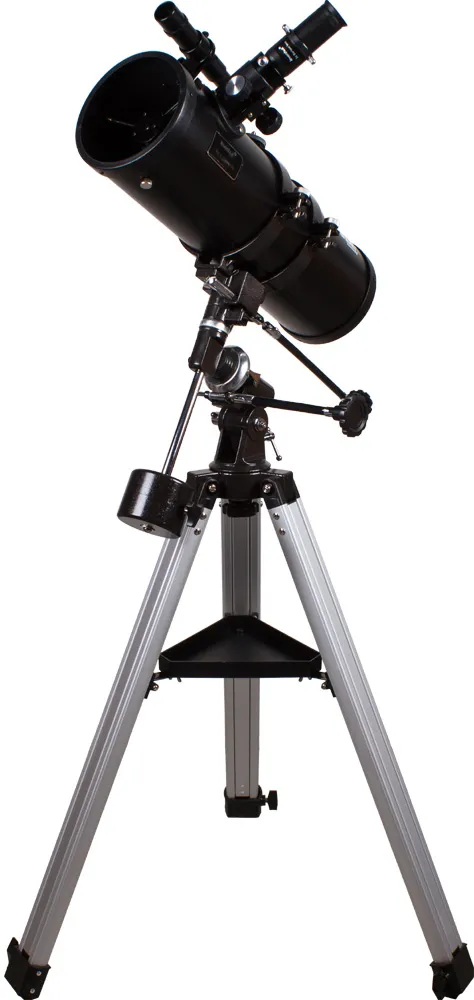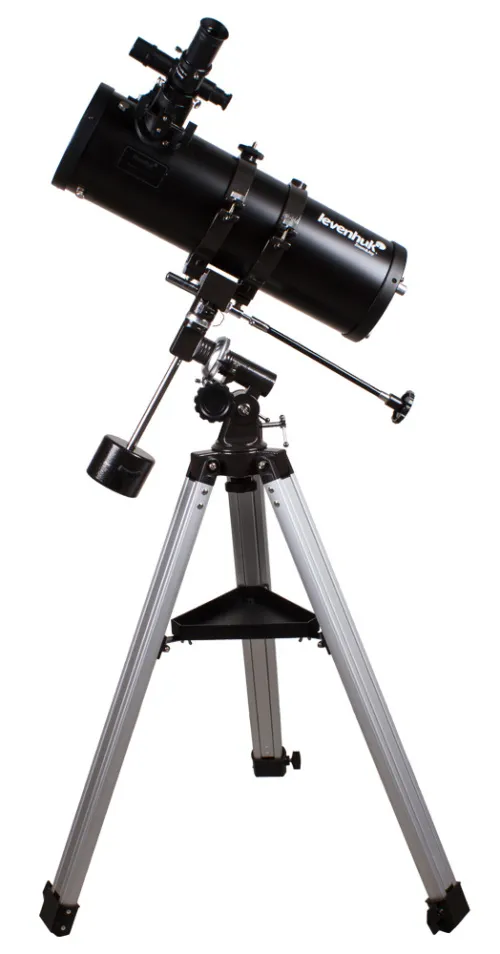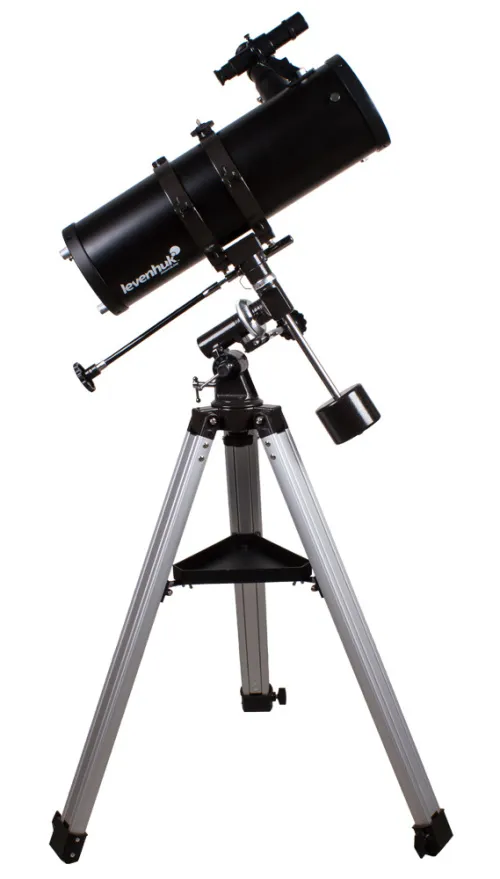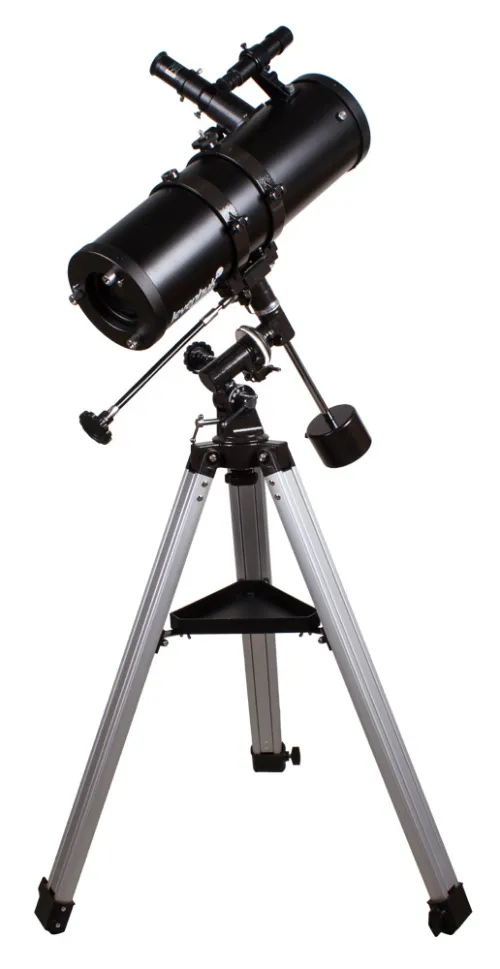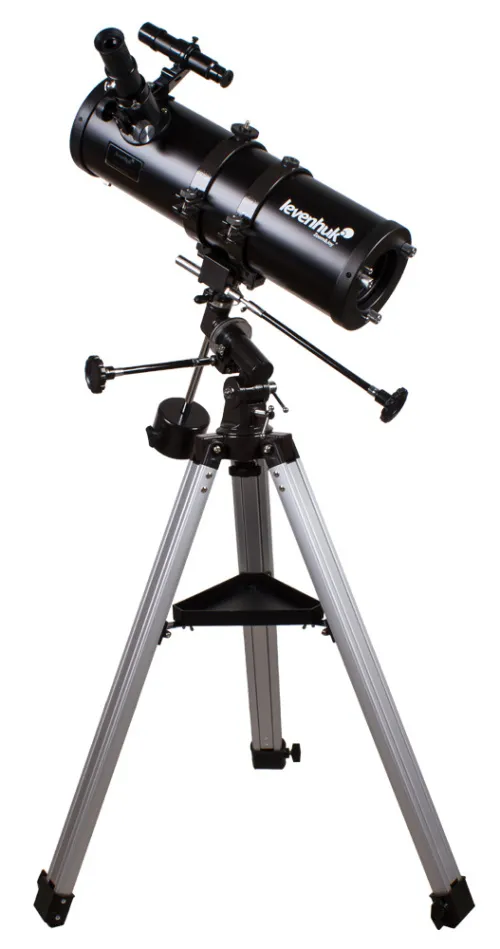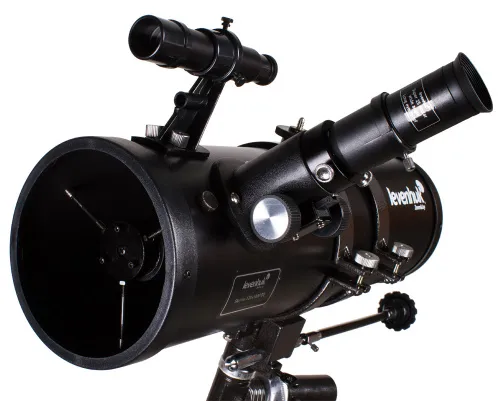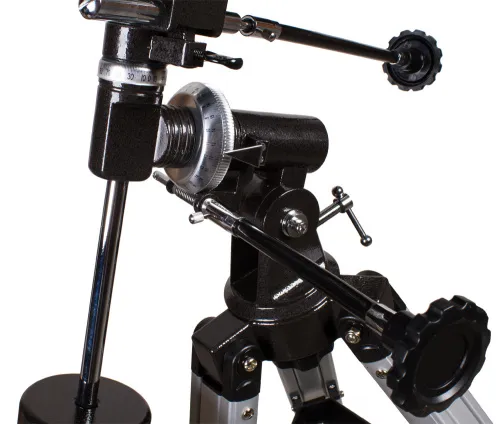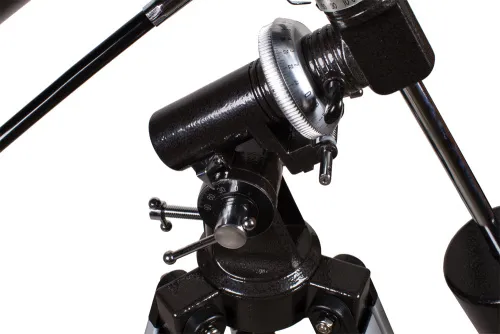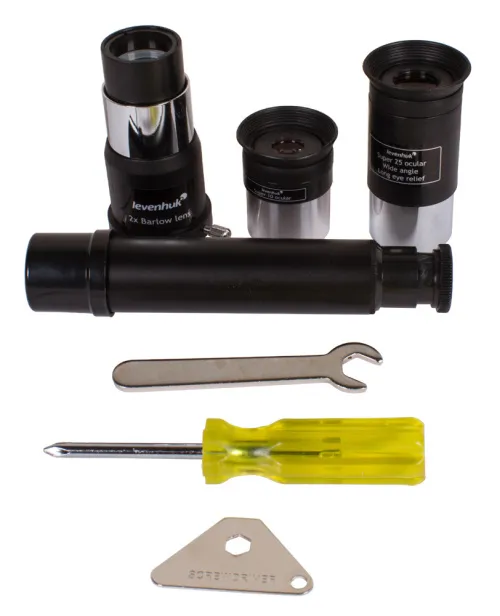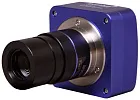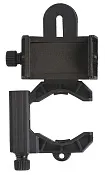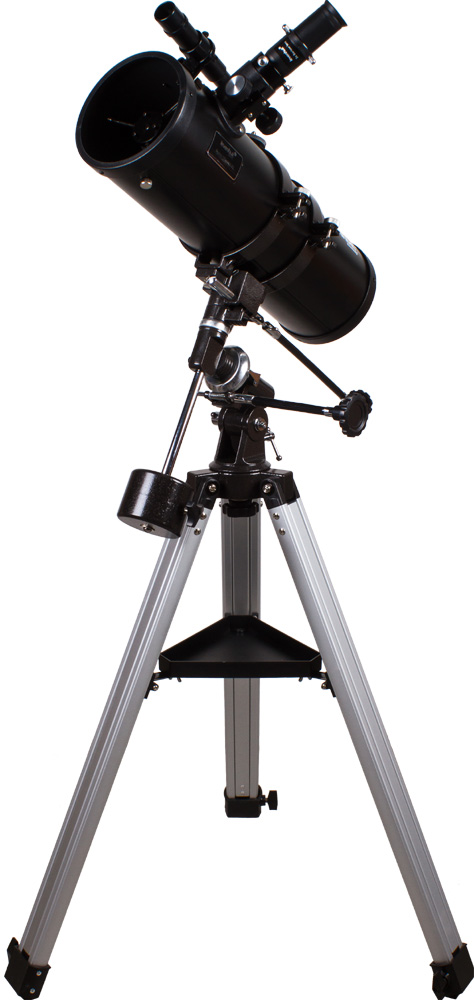Levenhuk Skyline 120x1000 EQ Telescope
Newtonian telescope. Aperture: 114mm. Focal length: 1000mm
| Product ID | 27645 |
| Brand | Levenhuk, Inc., USA |
| Warranty | lifetime |
| EAN | 0611901508887 |
| Package size (LxWxH) | 82x39x25 cm |
| Shipping Weight | 10 kg |
Levenhuk Skyline 120x1000 EQ is a Newtonian reflecting telescope. Its mirrors produce no chromatic aberration, which may be especially noticeable during observations of brighter objects with a refracting telescope. The long focal length of this telescope makes it the perfect choice for observations of planets, features of the lunar surface and binary stars. The large, 114-mm primary mirror gathers so much light (2.25 times more than its 76-mm counterpart) that this telescope produces very detailed views of bright deep-sky objects. Additionally – thanks to the capabilities of this telescope – you can even try your hand at astrophotography. The equatorial mount that comes with Levenhuk Skyline 120x1000 EQ makes this telescope even more practical and precise. Overall, this instrument will make a wonderful addition to the equipment of any amateur stargazer.
Features:
- Suitable deep sky objects study: nebulae, galaxies, globular clusters and faint stars;
- Fairly small overall dimensions for the focal length of 1000 millimeters (39.4 inches);
- Contrast and sharp images without distortion;
- Can be used for astrophotography.
The kit includes:
- Telescope optical tube (optical elements inside)
- SUPER 25 and SUPER 10 eyepieces
- Equatorial mount EQ1
- Aluminum tripod
- 2x Barlow lens
- User manual and lifetime warranty
| Product ID | 27645 |
| Brand | Levenhuk, Inc., USA |
| Warranty | lifetime |
| EAN | 0611901508887 |
| Package size (LxWxH) | 82x39x25 cm |
| Shipping Weight | 10 kg |
| Optical design | reflector |
| Optical scheme | Newtonian |
| Primary mirror diameter (aperture), mm | 114 |
| Highest practical power, x | 230 |
| Aperture ratio | f/8,8 |
| Resolution threshold, arcseconds | 1.2 |
| Limiting stellar magnitude | 12.2 |
| Eyepieces | SUPER 10mm, SUPER 25mm |
| Eyepiece barrel diameter, in | 1.25 |
| Barlow lens | 2x |
| Finderscope | optical, 5x24 |
| Focuser | 1.25", rack & pinion |
| Tripod | aluminum |
| Tripod height (adjustable), mm | 710–1230 |
| Mount | equatorial |
| Optical tube weight, kg | 3.6 |
| User level | beginners |
| Observed object | deep-sky objects |
All about Levenhuk Skyline 120x1000 EQ Telescope
Convenient diagrams that describe how to install additional accessories on refractors and catadioptric telescopes
Find out how to assemble a telescope on an example of the Levenhuk Skyline 90x900 EQ telescope
This short guide will help you avoid typical mistakes and learn more about telescope and mounting types
The basics of astronomical observations for beginners
In this article we have gathered answers to some of the most frequently asked questions about telescopes
The most interesting celestial objects you can observe with Levenhuk telescopes
How telescopes work?
You can actually perform observations from your balcony!
All about telescope sizes, types, magnification, and mounts
Learn how to set up and use the telescope properly
Astronomy in light-polluted skies. Find out what you can observe in the city
Read an interesting comprehensive article on telescopes for little astronomers
The pictures are made with Levenhuk telescopes
Celestial objects you can observe with telescopes of different apertures
Colored and vivid images of galaxies, planets and star clusters entrance everyone who is fascinated by boundless space
Find an interesting review on the history of the changes to a refracting telescope
To make the process of choosing a telescope easier, we will tell you about the characteristics of the most popular types of telescopes today
Learn everything you need to know about refractor telescopes to make the right choice

